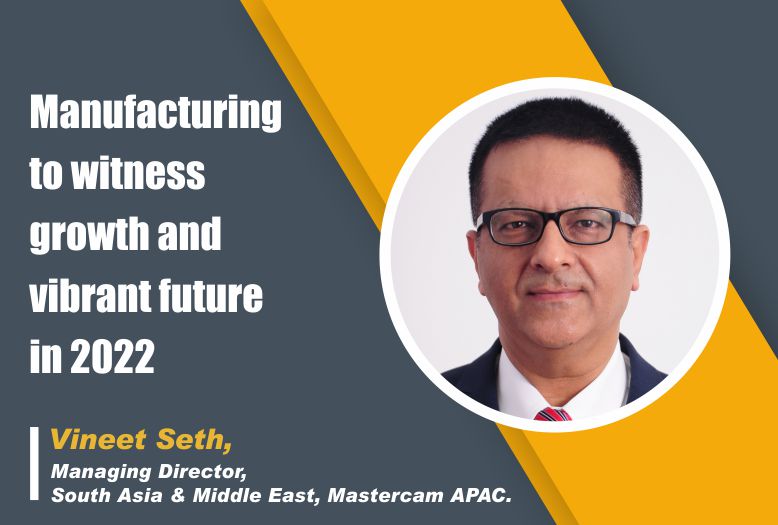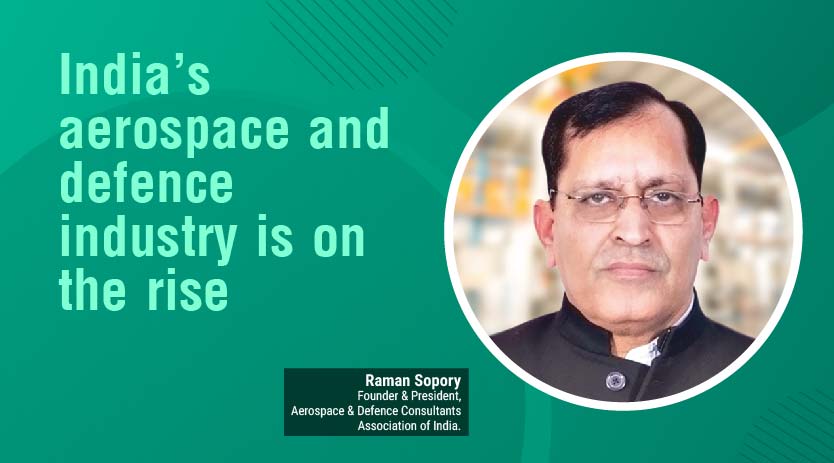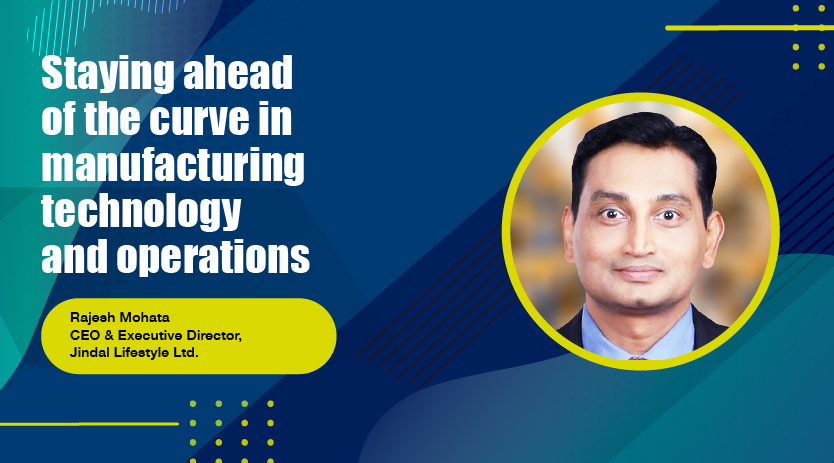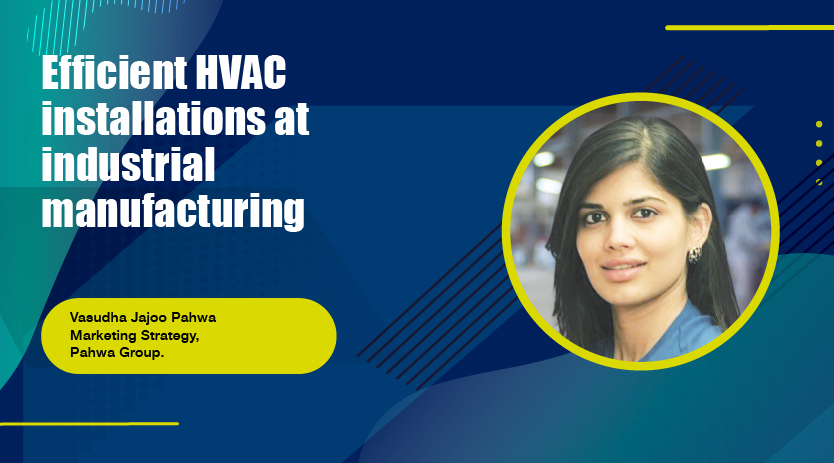Manufacturing to witness growth and vibrant future in 2022
January 3, 2022 5:17 pm
We will be showcasing our most recent, 2022 version of Mastercam, with over 150 enhancements to the existing toolpaths.
Your expectations from IMTEX 2022
The past two years have made quite an impact on the industry and the general expectation from IMTEX 2022 will be to boost the much needed confidence in the manufacturing business, specifically in the machine tool segment – with continued growth in 2022, at the very least.
IMTEX 2022 also needs to boost confidence in the manufacturing sector, that it is business as usual, considering that we have vaccinated more than 100 crore population in the country now. While there may not be much international participation due to various travel advisories and regulations, this is a wonderful opportunity for domestic manufacturers to showcase their products.
Of course, the very purpose of IMTEX is to see quality footfall of prospective customers –therefore, it will be very important for this factor to be met, while following all SOPs and guidelines for Covid-19.
What interesting, products and manufacturing technologies are expected to be displayed?
I would imagine that in the past 18 months, many companies while managing the Covid scene, may also have given quite a push to innovation and accordingly, I would expect to see some advancements in multitasking machines, robotics and IIoT products. Since the Forming show is also being held in parallel this time, we would also expect to see some interesting sheet metal and composite forming technology at display.
From our end, we will be showcasing our most recent, 2022 version of Mastercam, with over 150 enhancements to the existing toolpaths, including some very powerful and flexible 3D linking as well as a brand new Unified 5 Axis toolpath strategy. Also, keeping a focus on learners from all walks of life, Mastercam HLE (Home Learning Edition) / Demo Edition (meant for personal use and self learning) is revamped to support more Mastercam products, addons and functionality than ever before.
Your opinion about manufacturing in 2022
According to a recent report by the IMF, manufacturing in India is expected to grow at a rate of 8.5 percent, while the global growth average is likely to be around 4.9 percent. I feel that this is more or less what I would consider as closer to reality as possible. The pandemic has held this sector with a vice-like grip for a good part of the past 18 months; and based on the success of our domestic vaccination program, this should ease up fairly well in Q1 next year. There is also quite a lot of pent up demand which should play a positive role.
Many automotive manufacturers have announced ambitious plans to launch new SUVs and EVs in 2022, which will also be a catalyst of growth for the manufacturing sector in the country.
Globally as well as domestically, many space mission programmes have been announced, including a manned mission to moon before the end of this decade.
The healthcare sector too is booming and the special PLI announced for medical device manufacturing in 2022, as also the upcoming medical technology parks are aiding manufacturing growth in this segment.
All in all, I see a positive growth in 2022 and we are very excited about the future of manufacturing in the country.
What are the upcoming technology trends in metal forming/ metal cutting?
The hybrid manufacturing process, that combines Additive Manufacturing (AM) and Subtractive Manufacturing (SM) is really the most talked about technology in our markets. As I have spoken quite a bit in the past few years, the footprint of the newage machine is critical to manufacturing success of any organisation, considering that real-estate cost per machine is going up quite a lot in recent times. Being able to process a component in a single station or as few as possible – is the new productivity mantra across industries.
Bringing AI into manufacturing, the ability to measure various processes parameters and provide intelligent reports in real-time, while harnessing big data is also another technology that is seeing fast adoption.
What new automations trends could be conceptualised to make the machine tools industry more user friendly, for a sustainable future?
The machine tool industry currently offers many automation ideas and options to make them industry friendly. Beginning with material handling and assisted loading/unloading, production processes are one of the largest consumers of automation in the industry.
An area I see a lot of potential is, in re-manufacturing and repurposing old machine tools through a high quality automated process, which will help reduce the overall carbon footprint of manufacturing new machine tools, without compromising the output quality, precision and accuracies. Something that they currently do for special projects, it may also be a great idea for machine tool companies to bundle relevant technologies certified by them, to customers. We work with quite a few reputed machine tool manufacturers in this segment and see a larger success in this method, for all stakeholders involved.
What role will robotic automation play to improve efficiency in creating futuristic machine tools?
Robotic automation plays a vital role in manufacturing. Robot assisted CNC cells as well as Co-bots deliver a great value when it comes to integrated manufacturing. Offline programming and control of such cells ensure superior quality in terms of repeatability and setup accuracies. It also solves the problem of errors due to human fatigue as well as manual programming. While enabling lights-out manufacturing, it also combines in process inspection and validation, thereby ensuring a water tight production/manufacturing process – avoiding potential post-manufacturing rejections. Robotic automation is absolutely essential, while manufacturing or repairing nuclear or hazardous material.
No doubt, Industrial robots are already adding great value to manufacturing and their capability as well as reliability is increasing day-by-day.
Industry 4.0 is for futuristic solutions, promotion of Industry 5.0 is to optimise processes?
Your views. Many leading manufacturing companies are already using some parts/components/processes from Industry 5.0, but since this technology is still evolving, there is currently a lot of learning that needs to be done from large scale pilot projects.
Production technologies will certainly benefit from both Industry 4.0 and 5.0 techniques and components. Since this technology combines interaction of the human mind, capability alongside cognitive computing; this technology is probably the answer everyone is seeking to fortify JIT, Elastic Demand, Mass customization as well as responsible sourcing/manufacturing. Production engineering can harness the AI and computing power the technology can bring to the table, while the human mind can provide intelligent inputs and variables into the system to structure a dynamic plan with intelligent nodes providing for automated or semi-automated sub-processes.
While it may not exactly be a push button technology, it will certainly be optimal in the practical sense.
“I, for sure, am very optimistic about Industry 4.0 and 5.0.”
Cookie Consent
We use cookies to personalize your experience. By continuing to visit this website you agree to our Terms & Conditions, Privacy Policy and Cookie Policy.



















 English
English Hindi
Hindi